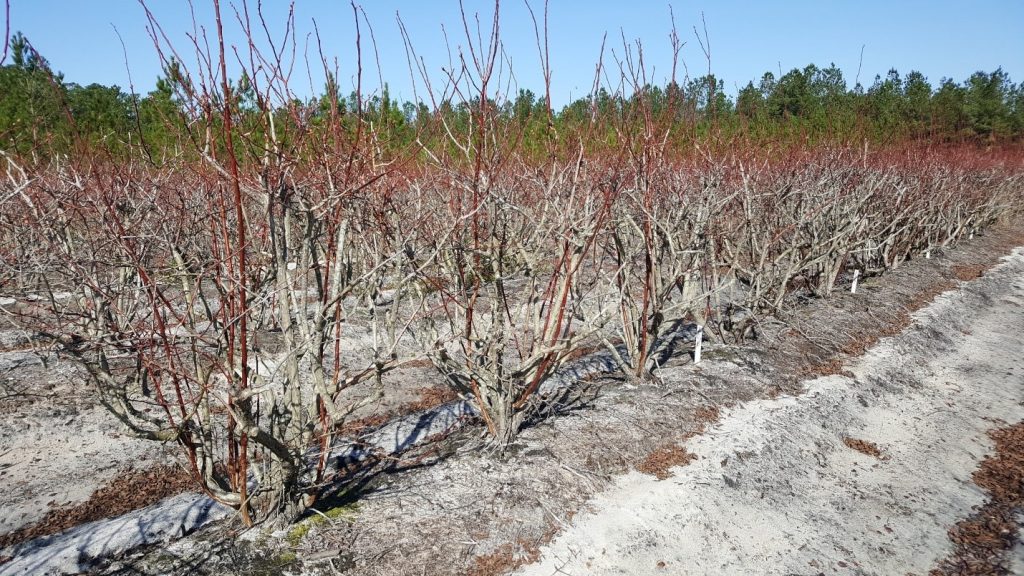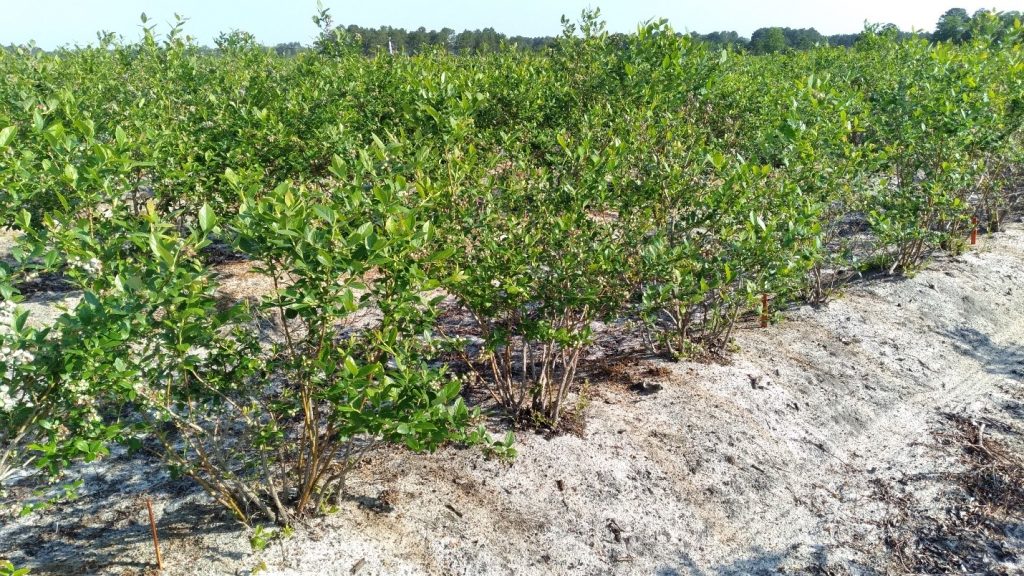Kira Sims, Katie Jennings, David Monks, David Jordan, Mark Hoffman, Wayne Mitchem
The 2,4-D choline (Embed Extra) formulation was recently registered for use in bearing blueberry (Anonymous 2021). Annual and perennial broadleaf weeds common to blueberry production are effectively controlled by 2,4-D, including annual morningglory (Ipomoea spp.), common lambsquarters (Chenopodium album L.), curly dock (Rumex crispus L.), field bindweed (Convolvulus arvensis L.), Canada goldenrod (Solidago canadensis L.), horseweed (Erigeron canadensis L.), and vetch species (Vicia spp.) (Anonymous 2021).
Therefore, field studies were conducted on southern highbush blueberry (Vaccinium corymbosum L.) in Elizabethtown and Rocky Point, NC in 2019, 2020, and 2021 to determine tolerance of younger and older bearing blueberry bushes to 2,4-D choline POST-directed.
Treatments included 2,4-D choline at 0, 1.0, 2.0, 3.0, and 4.0 pt/A applied alone in winter during dormancy, and sequential treatments at 1.0 followed by (fb) 1.0, 2.0 fb 2.0, 3.0 fb 3.0, or 4.0 fb 4.0 pt/A. The first application of the sequential treatments was applied in winter followed by another application of the same amount in spring during early green fruit.
Injury to blueberry from 2,4-D choline treatments was not observed for either maturity stage, and fruit yield was not affected by any of the treatments. Differences among treatments were not observed for fruit soluble solid content (SSC) in older bushes, or for fruit pH, SSC, and titratable acidity (TA) in younger bushes. In older bushes, fruit pH and TA had rate by timing interactions, and TA had a farm-year interaction with differences at Rocky Point in 2019 and Elizabethtown in 2020, but biologically no pattern was observed from the treatments.
These results indicate that 2,4-D choline directed to the base of younger and older bearing blueberry bushes does not affect crop growth, fruit yield or fruit quality when applied sequentially in winter and spring. Because blueberry is a perennial crop, future research should include a multi-year study looking at the effects of 2,4-D choline when applied in sequential years on growth, fruit yield and fruit quality.
For more information please see the full article:
Sims K, Jennings K, Monks D, Mitchem W, Jordan D, Hoffmann M. (2022) Tolerance of southern highbush blueberry to 2,4-D choline postemergence-directed. Weed Technol 36(3), 409-413.

